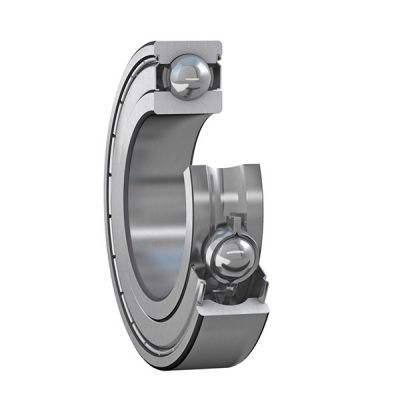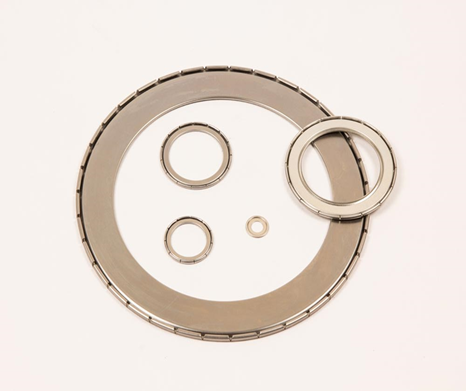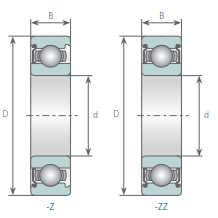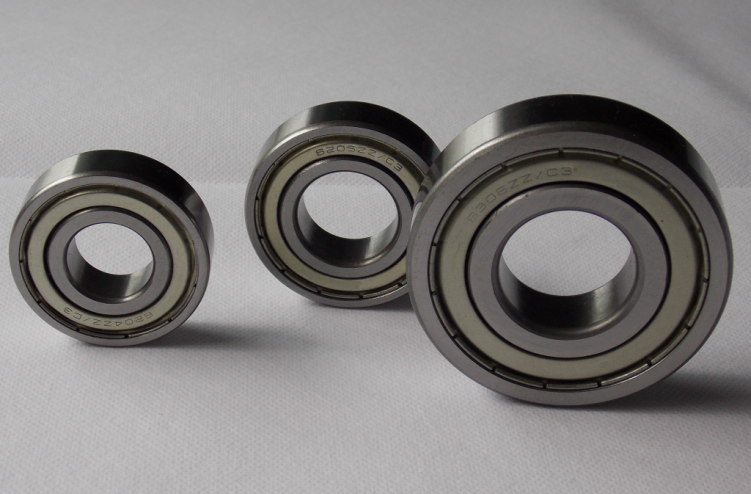Exploring the Condensation of Constant Frequency and Variable Frequency Air Pressure Regulators
Now it analyzes the causes of the condensation problems of fixed frequency and variable frequency air conditioners, which are reflected in the market, and proposes corresponding test methods and improvement methods for the characteristics of fixed frequency and variable frequency air conditioners. 1 difference between fixed frequency and variable frequency air conditioner The biggest difference between fixed frequency and variable frequency air conditioners is that the air regulator has different operating principles on the compressor. The fixed-frequency air conditioner adopts a fixed-frequency compressor. The operating frequency of the compressor is constant and the rotation speed is constant. It relies on continuously “opening and stopping†the compressor to adjust the indoor temperature, which may cause the room temperature to suddenly become cold and cold. Hot, and consume more power. The variable frequency air conditioner adopts a special inverter compressor, and the compressor running frequency can be steplessly adjusted, that is, the speed is variable. In order to cool the room as quickly as possible and meet the user's requirements, the compressor of the variable frequency air conditioner will quickly rise to a high frequency and maintain high frequency operation after starting, and can be moderately adjusted in the case of long-term operation. If the room does not need a large amount of cooling, the compressor will go to the low-frequency state, intelligent constant temperature control, to achieve "no downtime" to ensure the stability of the ambient temperature. 2 Analysis of the causes of condensation problems in fixed frequency and variable frequency air conditioners The condensation problem of the air conditioner is highlighted in the following two aspects: 1) the surface of the structural member of the air conditioner has condensed water generated and dripped (especially around the air outlet and the air guide vane); 2) air conditioner cooling operation At the time of the air supply, water drops are blown out. The direct cause of condensate on the surface of the air conditioner is that the surface temperature of the air conditioner is lower than the air dew point temperature. For the national standard condensation test indoor working conditions 27 ° C / 24 ° C, the dew point temperature is 22.8 ° C, when the air conditioner grille or panel temperature is lower than the temperature value, the surface will have water condensation. The condensation of the guide vanes is due to the large temperature difference between the two surfaces of the guide vanes. This problem is determined by the design of the ducts, especially when the position of the flaps is close to vertical. The reasons why the water bead blows during the air supply of the air conditioner are as follows: 1) When the temperature of the cross-flow fan is lower than the dew point temperature of the air, the water on the cross-flow fan will condense, and after the condensed water is gradually increased, The centrifugal fan is used to remove the cross-flow fan. A part of the water is blown out from the air outlet, and the rest is on the surface of the evaporator or the air duct. The air passes through different positions of the evaporator, and the temperature is reduced by a different amount, which easily leads to water blowing. As shown in the figure, the indoor air condition is point A (dry ball 25 ° C, relative humidity 70%). When passing through the evaporator, part is processed to point B, and the other part is processed to point C. When B and C are mixed The state is D point (dry ball 15 ° C, relative humidity 98%), that is, the indoor air outlet state point. At this time, after the cross-flow fan temperature is stable, the heat balance is reached, and the temperature is also 15 degrees. In this case, the dew point (E) temperature at point C is 18 degrees. When it contacts the cross-flow fan, it condenses water on the surface of the cross-flow fan, eventually causing the indoor unit to blow water. 2) During the operation of the air conditioner, condensed water will continuously generate on the evaporator. If the condensate is not smoothly removed, part of the condensed water will easily blow out with the wind, especially in the case of high air speed operation of the air conditioner. The above reasons are common to both fixed-frequency air conditioners and variable-frequency air conditioners, but they differ. The variable frequency air conditioner will quickly rise to a very high frequency after starting, and in the high frequency operation, the temperature of the evaporator will be low, so that the air supply temperature of the air outlet and the surface temperature of the machine are lower. It is more prone to condensation problems. Therefore, the variable frequency air conditioner has more serious condensation problems than the fixed frequency air conditioner, and needs more attention from the designer. 3 Discussion on the improvement method of condensation problem of fixed frequency and variable frequency air conditioner The solution to the surface condensation of the air conditioner is to increase the surface temperature of the air conditioner. There are two ways: 1) increase the temperature of the cold source (evaporator); 2) increase the thermal resistance of the cold source (evaporator) on the surface of the indoor unit. The fundamental solution to the problem of water droplets blowing during the air supply of the air conditioner is to make the air flow evenly through different parts of the evaporator. The purpose is to distribute the flow of the branches in the evaporator evenly and to move the hot spots of the refrigerant in the evaporator back. The compressor frequency of the fixed-frequency air conditioner cannot be adjusted, and the speed of the outdoor motor is generally not adjustable, which determines that it has limited methods for solving the condensation problem. The compressor frequency of the variable frequency air conditioner and the speed of the outdoor motor can be adjusted, which determines the control mode of the variable frequency air conditioner is more complicated. The method and the fixed speed air conditioner need to be adopted when solving the condensation problem. To some extent, there are more ways to do it, but there are more factors to consider. In addition to the above methods, the variable frequency air conditioner can also adopt the method in the table. Analysis of the solution to the condensation problem of the variable frequency air conditioner The above analysis shows that the generation of the fixed frequency and variable frequency air conditioner condensation problems and system matching, control mode and parameter design, structural design, material insulation performance, process processing, etc. They are all closely related. The method described above can effectively improve the condensation problem of fixed-frequency and variable-frequency air conditioners, which can be used by product designers for reference, but at the same time, designers need to fully consider the influence of individual schemes on performance parameters such as cooling capacity and energy efficiency ratio. According to the actual situation, select a reasonable test method and carry out detailed comparative analysis to make the best design.
Iron Shielded Deep Groove Ball Bearing is one type of ball bearings. shields are non-contact metallic (carbon or stainless steel) devices which allow high-speed operation but offer limited protection against the ingress of moisture and dirt. but do not protect against liquids. They add no friction during operation and therefore do not generate heat build-up. Iron shielded deep groove ball bearings often have steel shields installed on one or both sides and are pre-lubricated with grease. While many different retainers are available, pressed steel cages are most commonly used.
Bearing dust shields have been available almost as long as Ball Bearing itself. Shields are needed to stop the grease lubrication used in these bearings from leaking out. This is particularly important in applications where grease leakage may contaminate the product. The main impetus towards shielded bearings comes from the growing use of [sealed-for-life" bearings in items such as white goods, cars and power tools. Shields are fitted in the outer ring and do not make contact with the inner ring, but form a narrow gap with it.
Depending on the bearing design, series and size, MANU supplies shields in different designs.
With one shield (-Z) on one side or two shields (-2Z/ZZ) on both sides; Due to the manufacturing processes used, open bearings can have turned recesses in the outer ring for shields.
Celarance:
Internal clearance provides the bearing room for expansion between the bearing races and will add a small amount of play between the two rings. Large clearance C3/C4 usually used in harsh environment. with good anti-seize performance used in particularly harsh environment.
Tolerances
The standard version of our single-row deep groove ball bearings has the tolerance class P0
(designs with tighter tolerances available upon request)
To be the first class, to do the best quality, to make users satisfied, to ensure customers relieved, are our enterprise purposes. Welcome bearing dealers` and Conveyor Idler manufacturers contact from all over the world, and become our partner.
Iron Shielded Deep Groove Ball Bearing Iron Seals Ball Bearing,Iron Sealed Ball Bearing,Iron Shielded Bearing,Steel Shielded Bearing Shandong Xinkaite Bearing Co., Ltd. , http://www.conveyorbearing.com



